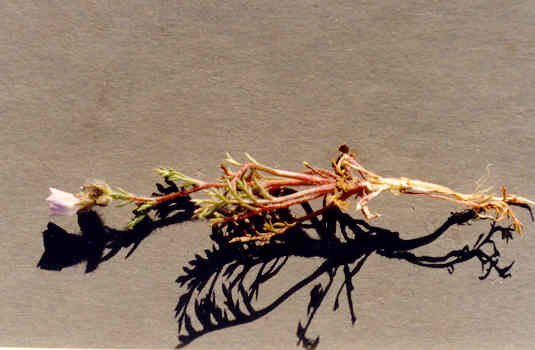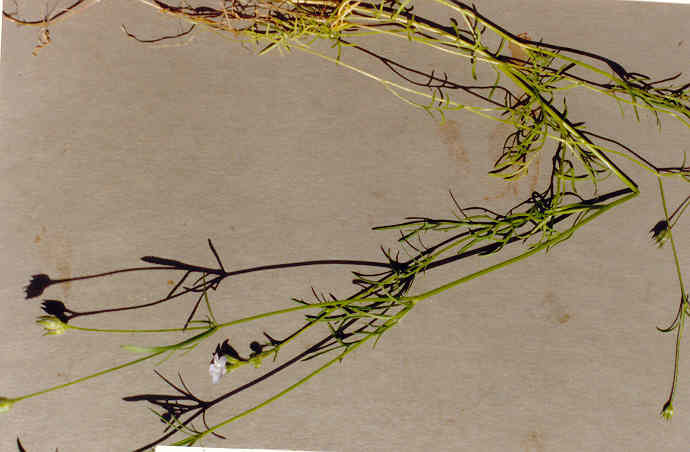
 |
Gilia angelensis V. GrantPolemoniaceae (Phlox Family)NativeGrassland GiliaLos Angeles Gilia |
February Photo
Plant Characteristics:
Erect annual, 0.7-7 dm. high, usually with spreading branches; stems
glabrous or floccose below, sometimes glandular above; lower lvs. unipinnately
or bipinnately dissected, 2-5 cm. long, the ultimate segms. +/- falcate, 5-15
mm. long, 0.5-1.5 mm. wide, the axils of the lvs. floccose; infl. cymose, the
heads usually ca. 5-fld., several, on naked peduncles 1-5 cm. long; pedicels 2-3
mm. long; calyx 3-4 mm. long, mostly floccose, the lobes acute, the cent. part
green, the margins hyaline, 0.1- 0.3 mm. wide at sinus; corolla campanulate, 7-8
mm. long, the limb blue-violet to white, the tube pale yellow, the lobes ovate,
2-3 mm. wide; fils. ca. 1 mm. long; caps. ovoid, dehiscent, 20-30 seeded; seeds
0.5-1 mm. long.
Habitat:
Loose, often sandy or gravelly soil, below 6300 ft.; Coastal Sage Scrub,
Chaparral, Yellow Pine F.; cismontane to Santa Barbara Co. and n., and s. to L.
Calif., Catalina Id. March-May.
Name:
The genus was named for Filippo Luigi Gilli (1756-1821) who
collaborated on a botanical work with the Spaniard Caspar Xuarez.
Angelensis, of Los Angeles (County).
(Dale 154).
General:
Uncommon in the study area, found only on a bench above and northerly of
the 23rd St. study area. In early April 1993, this species was found on the sandy
bench below Eastbluff's northerly end. (my
comment). There
are many lovely wildflowers in the genus Gilia. G. angelensis is
pale and slight, and G. capitata with powder blue flowers in a head
occurs in masses only after fires. (Dale
154)
Text Ref:
Dale 153; Munz, Flora So. Calif. 647; Roberts 32.
Photo Ref:
Feb-Mar 88 # 5; Dec-April 92,93 # 18.
Identity: by R. De Ruff,
confirmed by F. Roberts.
Computer Ref: Plant Data 368.
Have plant specimen.
Last edit 5/29/03.
 |
March Photo